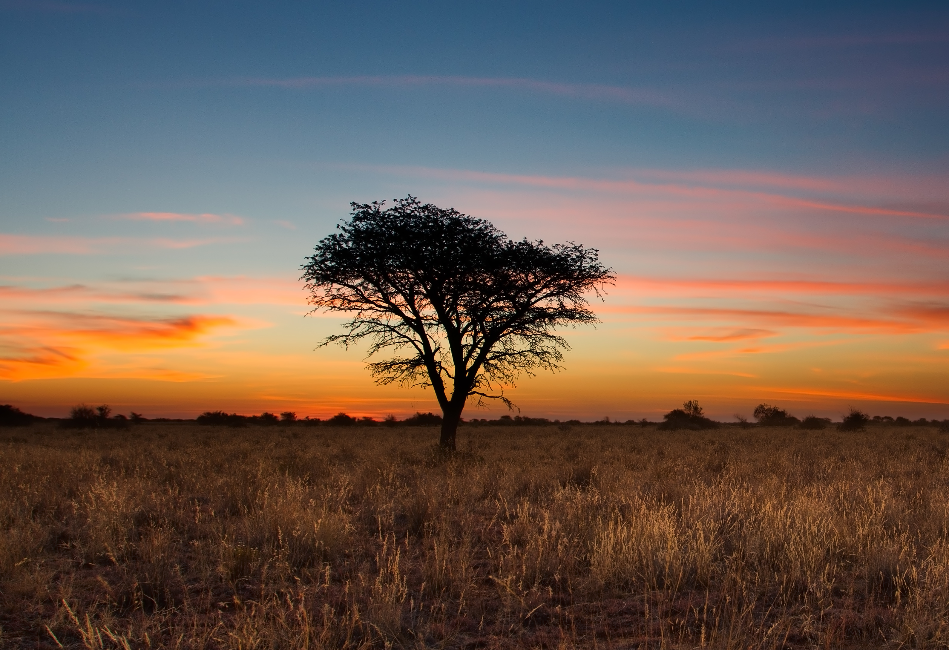There’s an expression Italians often use when speaking of Africa: Mal d’Africa and The French call it "Mal d' Afrique"
It doesn’t translate neatly into English, but if you’ve ever set foot in Kenya, you’ll understand it immediately. It’s the deep yearning, the quiet melancholy, the unshakable pull that stays with you long after you leave.
For me, Mal d’Africa in Kenya is… a memory woven into scents, sounds, and sights that return when I least expect them. It’s the warmth of the rising sun stretching across the endless plains. It’s the quiet elegance of elephants moving in rhythm with the land. It’s the fiery sunsets that paint the horizon in hues you never imagined existed outside an artist’s canvas.
Kenya lingers with you in the smallest details: The earthy fragrance of rain falling on red soil, the crackle of roasting peanuts mingling with the sweet aroma of roadside maize, the genuine smiles of children waving as you pass by, the melodic rhythm of the Swahili greeting, “Jambo,” which makes you feel instantly at home.
Kenya does not just touch you, it stays with you. That is "Mal d’Africa"
The Anticipation of Adventure
The pull begins even before the adventure starts. There’s an electric anticipation you feel when approaching the gates of a safari park, your heartbeat syncing with the wild possibilities waiting inside.
In Amboseli, the deep rust-red soil crunches beneath your feet while the majestic silhouette of Mount Kilimanjaro looms in the distance, timeless and unshaken.
In the Maasai Mara, the drama of the Great Migration unfolds: wildebeest in their millions, the thunder of hooves, predators waiting in patient silence.
It is in these landscapes that Mal d’Africa—this unshakable longing—carves itself deep into your soul.
Beyond the Wild: The Heart of Kenya is its People
While the landscapes are extraordinary, it’s the people who make Kenya unforgettable. Kenyans embody warmth, generosity, and resilience. Hospitality here is not a performance; it is woven into everyday life.
You’ll feel it in the woman who insists you taste fruit from her stall.
In the constant “hello” from strangers who greet you like family.
In the passerby who ensures you find your way without hesitation.
That human connection—simple, genuine, and profound—is the essence of Kenya’s magic.
Kisumu: The Soul of Lake Victoria
To truly experience Kenya, it’s important to step beyond the standard itineraries. On the shimmering shores of Lake Victoria lies Kisumu—a hidden gem that carries the soul of the country.
Despite being Kenya’s third-largest city, Kisumu offers an authenticity that bigger cities often lose. Unlike the fast pace of Nairobi or the coastal glamour of Mombasa, Kisumu moves at a rhythm that feels grounding, connected, and real.
Here, Mal d’Africa takes on a special flavor—one shaped by water, culture, and community.
The Call of Lake Victoria
At sunrise, fishermen set out in slender wooden boats, their silhouettes gliding across the mist rising from the lake’s vast expanse. Lake Victoria is not just water; it is life itself. It feeds families, anchors traditions, and provides a gathering place for communities.
And then there is the taste of fresh tilapia, grilled right at the shore and served with ugali. It’s more than a meal—it’s an initiation into Kisumu’s soul. You eat it with your hands, share laughter and stories, as waves lap the shore and boatmen sing in the distance.
A City Alive with Warmth
Kisumu doesn’t overwhelm. Its charm lies in its rhythm:
-
Markets overflowing with mangoes, pineapples, and avocados sweet as sunshine.
-
Stalls offering chapati, mandazi, and steaming mugs of chai.
-
Streets alive with the hum of motorbikes, the rhythm of music, and conversations flowing freely.
Here, greetings aren’t rushed. People ask how you are—not out of politeness, but because they genuinely care. That’s Kisumu’s gift: it feels human.
Culture and Connection
As the cultural heartland of the Luo people, Kisumu thrives on tradition. Storytelling, music, and dance flow naturally into daily life. The sound of Ohangla music fills the air—drums pounding, voices rising, and feet moving in rhythm.
If you visit during a local festival, you’ll witness the pride of a people who celebrate life in color and movement. You cannot remain a bystander; Kisumu pulls you into its rhythm.
Nature at Kisumu’s Doorstep
Beyond the city, nature reveals itself in unexpected ways. At the Kisumu Impala Sanctuary, zebras, giraffes, and impalas wander freely. Birdwatchers delight in the Dunga Wetlands, alive with fish eagles and kingfishers.
And on Ndere Island, silence reigns, broken only by birdsong and the splash of fish. Here, you feel the timeless bond between land, water, and spirit.
Lamu: Where Time Stands Still
From the waters of Lake Victoria, we journey east to the Indian Ocean, where Lamu lies like a dream preserved in time.
Unlike bustling Mombasa, Lamu Island whispers of history, heritage, and serenity. A UNESCO World Heritage Site, it is one of Kenya’s most enchanting hidden gems.
A Town Steeped in History
Wandering through the winding alleys of Lamu Old Town, you find coral-stone houses with intricately carved doors and alleys so narrow that donkeys—not cars—rule the streets.
The town is alive with echoes of the Indian Ocean trade, where Arab, Indian, and Swahili influences blended into a culture that remains vibrant today.
The Rhythm of the Ocean
Life here is tied to the sea. Dhows glide across turquoise waters, their sails catching the wind as they have for centuries. Fishermen haul in their morning catch while spice markets fill the air with scents of cloves, cardamom, and cinnamon.
Meals here are poetry: spiced pilau, coconut-rich curries, freshly grilled seafood, and sweet mahamri with cardamom tea. Each bite tells a story of centuries of cultural fusion.
Serenity and Connection
In Lamu, time slows. Days pass with ocean breezes, the call to prayer echoing across the island, and conversations under starlit skies.
Hospitality here is pure—you’re welcomed not as a tourist but as a guest. Whether sailing on a dhow at sunset or sipping coffee in a centuries-old Swahili home, Lamu embraces you with timeless grace.
Samburu: The Untamed North
Travel north, and Kenya reveals another face of its soul. Samburu is raw, wild, and untamed. It doesn’t flaunt the fame of the Mara, but its beauty lies in its quiet strength and resilience.
Here, the landscapes are harsher, more rugged—rocky outcrops, arid plains, and the ribbon of the Ewaso Nyiro River snaking through it all.
Wildlife Found Nowhere Else
Samburu is home to species you won’t find in the south: the graceful gerenuk with its long neck, the striking Grevy’s zebra, the Somali ostrich, the reticulated giraffe. These are the so-called Samburu Special Five, creatures that make this region unlike anywhere else in Kenya.
And then there are the elephants—majestic herds moving across the plains, protected and studied here for decades. Watching them against a backdrop of rugged hills feels like a glimpse into an ancient world.
A People of Grace
The Samburu people, close cousins of the Maasai, embody resilience and grace. Adorned in bright beads and traditional attire, they live in harmony with this land, their traditions intact despite the modern world pressing closer.
Their stories, dances, and ceremonies connect you not just to Samburu but to the timeless rhythm of Kenya itself.
Kakamega Forest: Kenya’s Secret Rainforest
If Samburu is wild and arid, Kakamega Forest is lush, green, and alive—a world apart.
Tucked in western Kenya, this is the country’s only tropical rainforest, a remnant of the once vast Guineo-Congolian forest that stretched across central Africa. Few visitors make it here, but those who do discover a hidden paradise.
A Symphony of Life
Walking through Kakamega, you are enveloped by sound: the call of colobus monkeys echoing through the canopy, the hum of insects, the chatter of hornbills and turacos. Over 300 bird species live here, alongside butterflies so brilliant they look painted.
The forest floor is alive too—with medicinal plants, towering trees, and trails that lead you deeper into a realm that feels both ancient and sacred.
Spirit of Stillness
In Kakamega, you experience a different kind of magic—the magic of stillness. Here, the world slows down. You breathe deeper. You listen closer.
It is in this rainforest, far from the savannahs and the coast, that you realize Kenya’s diversity is not just geographical—it is spiritual.
Why Kenya’s Hidden Gems Matter
Kenya’s hidden gems—Kisumu, Lamu, Samburu, Kakamega—remind us that this country is more than a destination. It’s an experience that lingers.
It’s the taste of tilapia on the shores of Lake Victoria.
The silhouette of elephants beneath Kilimanjaro.
The scent of spices drifting through Lamu’s winding streets.
The stillness of Kakamega’s forest floor.
The resilience of Samburu’s rugged plains.
Once Kenya touches you, it never lets go. That is Mal d’Africa, found here in Kenya’s heart.



